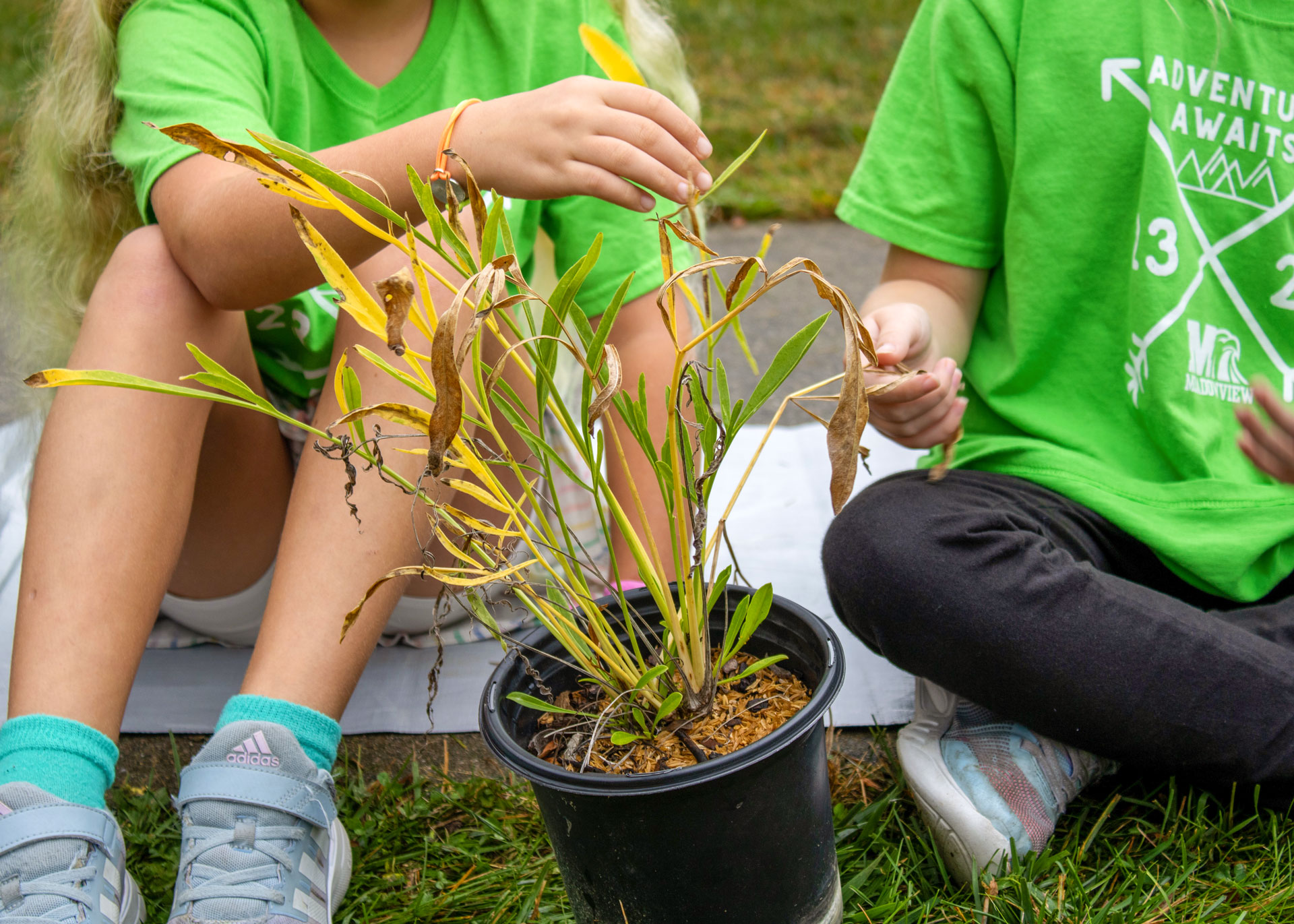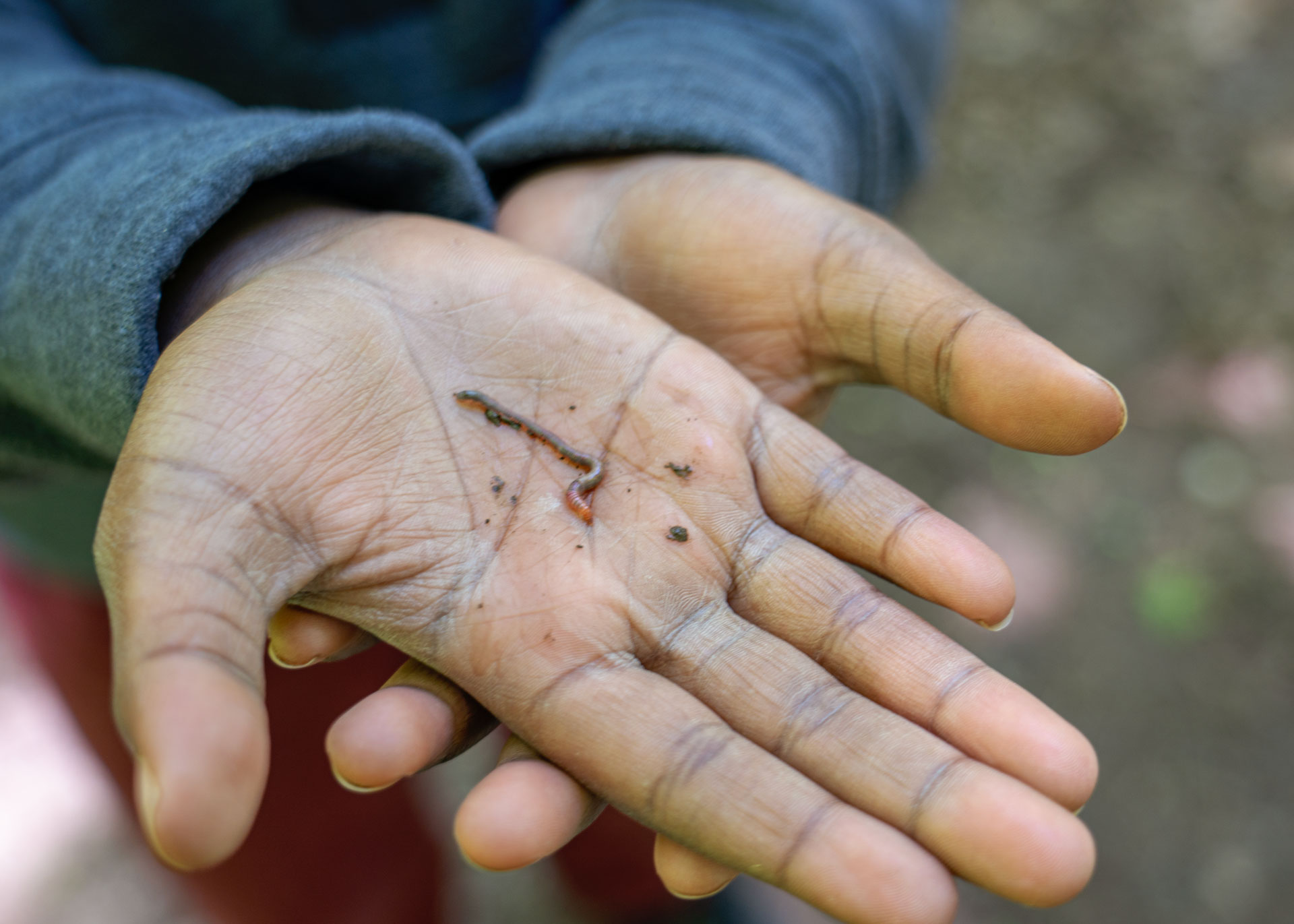A story by Bebe Raupe on Kim Forman. This article is also featured in the October 10, 2025, issue of The Ripple.
Click here to subscribe to this monthly e-newsletter!
Plant a seed, and so much more than you expect may grow.
Over the past 14 years, Kim Forman has seen this idea in action at the Stewart Elementary school garden, where children learn about nature through firsthand experiences.
Part of the Princeton City School District, Stewart Elementary has an economically diverse student population, many of whom live in apartments and mobile homes without distinct outdoor spaces, says Forman.
Often these pre-K through fourth-grade pupils hesitate to handle dirt or are initially afraid of worms, she says, simply because they haven’t experienced this before. However, that reaction quickly passes, she adds, as they enthusiastically start digging and planting.
Woven into grade-appropriate curriculum, lessons keyed to the garden run throughout the school year, with two harvests—one in autumn, another in spring—and indoor lessons during non-growing months.
Third-grade students plant potatoes before the end of the school year, then harvest them in the fall as fourth-graders, says Forman, which gives them a profound sense of accomplishment. Fast-growing vegetable seeds allow younger students to have a similar experience in spring, she says.
Not surprisingly, most of the student gardeners find their bounty quite tasty, even if they say they normally don’t like vegetables. “This is a chance to teach them how chemical reactions affect taste when a vegetable is cooked,’ says Forman.
“When you see a child pull a potato or a carrot out of the ground, when they had no idea that it came from the ground, it’s thrilling for them,” she says.
During wintry weather, every class participates in the “Great Amarilis Race,” says Forman.
Thanks to Forman’s local chapter of the Ohio Association of Garden Clubs, a grant enables each classroom to adopt and plant one Amarilis bulb. Over the ensuing weeks, the classes turn their scientific eye upon their bulb’s growth—tracking the size of the stem and leaves, making predictions about its color and how many blossoms it will have.
At the end of the growing period, three winners are chosen and put on display in the school’s front office and library, says Forman, adding, “[the race] brings so much excitement in the winter.”
Forman has been involved with the garden since its inception in 2011. Her children had attended Stewart Elementary, so when its gym teacher needed a master gardener to sign off on a grant he was seeking—to create a program to teach kids how food is grown—he turned to Forman.
In short order, she became the garden-wise person overseeing the operation, devoting untold hours to the project. “A garden will not grow without someone tending it,” she says.
Today, the garden has 48 raised beds, five outdoor classrooms, a pre-school garden, a pollinator garden, and three nature trails where kids learn about invasive species.
And its reach extends beyond the school property. In summer, produce harvested from the beds is donated to a local church, where it is given to families in need.
Chef’s Café, a community partner, uses herbs and vegetables grown in the garden and occasionally offers free cooking lessons using the school harvest. The restaurant also maintains a donation box to support the garden.
Most delightfully, says Forman, rose bushes and tiny gardens have cropped up at the nearby mobile home park. “Parents are picking up on the lessons their children are learning,” she says, adding that the garden adds value to the community by bringing people together.
During the school year, Forman devotes approximately eight hours a week to the garden, about half that in summer. She willingly gives her time: “How could I give back to my community in a more important way? Children today tend to be disconnected from the natural world. This is a practical, yet fun, way to teach them how we’re all connected in this fragile world.
But she doesn’t do it alone. Her efforts are supported by a core group of seven volunteers, as well as teachers.
Forman says Stewart Elementary is indebted to Roberta Paolo, who founded Granny’s Garden School at Loveland Elementary in 2002. As Stewart Elementary’s garden was getting up and running, Paolo shared real-world insights and meticulous lesson plans, aiding the effort tremendously, she says.
Though Granny’s Garden shut down in 2016 due to a lack of funding, Paolo’s legacy carries on at Stewart Elementary, says Forman.
“Like Roberta, we understand that if we ‘plant the seeds now,’ children will adopt a lifetime commitment to nature,” Forman says. “If they learn that every little plant is a habitat for something, as adults, they will plant for monarchs, won’t use pesticides, and may vote for policies that protect the environment.
“It’s truly a ripple effect that can carry across their lives,” she says.











